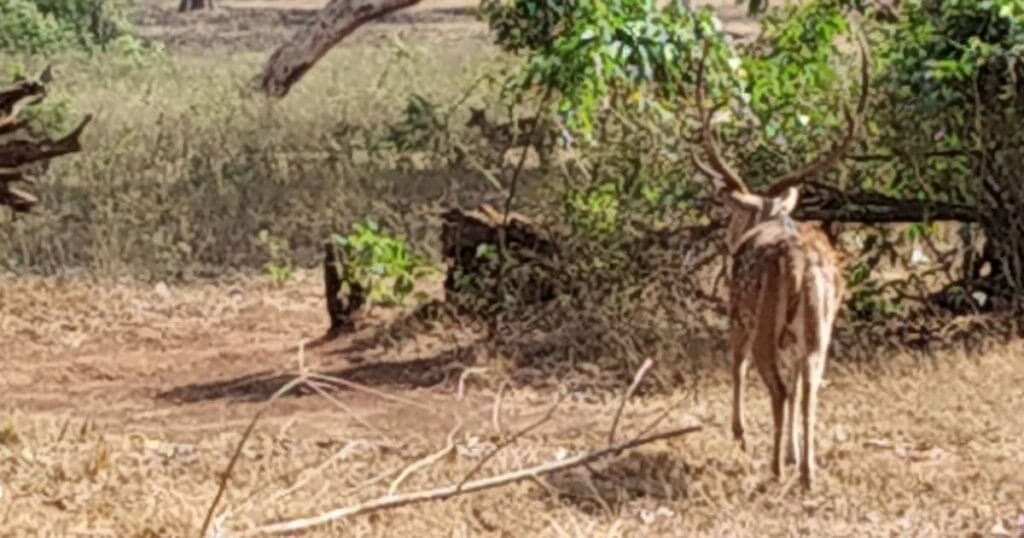
COMPETITIVE EXAM MCQs SERIES of ENVIRONMENTAL SCIENCE for UGC-NET/JRF, SLET, ARS, GATE, and other entrance tests – Contemporary Environmental Issues: Forest Conservation and Wildlife Conservation Projects.
Syllabus Outline
- Joint Forest Management and Social Forestry.
- National Afforestation Programme and Green India Mission.
- Major wildlife conservation projects in India (e.g. Project Tiger, Project Elephant, Project Snow Leopard, Crocodile Breeding Project, Indian Rhino Vision)
- Wildlife corridors, captive breeding, botanical gardens, zoos and seed banks.
- Role of international agreements and organisations in wildlife conservation (e.g. Convention on International Trade in Endangered Species, Convention on Biological Diversity, IUCN Red List, UNESCO World Heritage Sites).
This quiz contains concept-based, most frequently asked 25 MCQs of “Contemporary Environmental Issues: Forest Conservation and Wildlife Conservation Projects”. Each question has a single correct/most appropriate answer.
*****
1. Which policy first introduced the concept of Joint Forest Management (JFM) in India?
A) Wildlife (Protection) Act, 1972
B) National Forest Policy, 1988
C) Environment (Protection) Act, 1986
D) Forest Conservation Act, 1980
2. Social forestry programs in India include:
I – Farm Forestry
II – Rural Forestry
III – Urban Forestry
IV – Forest Protection Committees
A) I and II only
B) I, II and III only
C) II, III and IV only
D) All of I, II, III and IV
3. Project Tiger was launched in 1973 at which of the following national parks?
A) Kanha National Park
B) Sundarbans National Park
C) Jim Corbett National Park
D) Ranthambore National Park
4. In which year was the Project Elephant launched by the Government of India?
A) 1973
B) 1983
C) 1992
D) 2000
5. Project Snow Leopard in India was launched in the year:
A) 1995
B) 2000
C) 2009
D) 2015
6. The Crocodile Breeding Project in India primarily targets which of the following species?
A) Crocodylus porosus
B) Gavialis gangeticus
C) Alligator mississippiensis
D) Crocodylus niloticus
7. A wildlife corridor is primarily established to:
A) Provide additional food supply for wildlife
B) Connect fragmented habitats
C) Protect habitat replacement
D) Act as a buffer zone for wildlife
8. Which of the following is not generally included as an objective of Social Forestry in India?
A) Supply of fuelwood and small timber to rural communities
B) Protection of agricultural lands from wind erosion through shelterbelts
C) Reforestation of protected forests through community participation
D) Enhancement of rural livelihoods through community plantations
9. Which of the following statements correctly differentiates the Green India Mission (GIM) from the National Afforestation Programme (NAP)?
I – GIM focuses on improving forest quality; NAP focuses on afforestation of degraded areas.
II – GIM is both a central and state-sponsored program; NAP is a central sector program.
III – NAP addresses climate change; GIM deals with tree planting.
IV – GIM focuses on green infrastructure, whereas NAP focuses on afforestation.
A) I only
B) I and II
C) II and IV
D) I, II, III and IV
10. The Project Snow Leopard in India specifically targets conservation of the snow leopard and which of the following other high-altitude species?
A) One-horned Rhinoceros
B) Asiatic Ibex and Tibetan Argali
C) Ganges River Dolphin
D) Indian Wild Buffalo
11. Assertion (A): Joint Forest Management policies grant certain usufruct rights to forest-fringe communities.
Reason (R): Villagers agree to protect and regenerate forests and, in return, receive a share of forest produce or revenue.
A) Both A and R are true, and R explains A.
B) Both A and R are true, but R does not explain A.
C) A is true and R is false.
D) A is false and R is true.
12. Assertion (A): Wildlife corridors enhance genetic exchange among animal populations in fragmented habitats.
Reason (R): Corridors connect isolated patches of forest, allowing animals to move and interbreed between populations.
A) Both A and R are true, and R explains A.
B) Both A and R are true, but R does not explain A.
C) A is true and R is false.
D) A is false and R is true.
13. Assertion (A): Botanical gardens are examples of in-situ conservation.
Reason (R): Botanical gardens maintain collections of living plants outside their natural habitats.
A) Both A and R are true, and R explains A.
B) Both A and R are true, but R does not explain A.
C) A is true and R is false.
D) A is false and R is true.
14. Assertion (A): The CITES Appendix I lists species that are most critically endangered and restricts their international trade.
Reason (R): Species in CITES Appendix I can be traded internationally only for non-commercial purposes with a permit.
A) Both A and R are true, and R explains A.
B) Both A and R are true, but R does not explain A.
C) A is true and R is false.
D) A is false and R is true.
15. WWF-India collaborated with which state government to implement the Indian Rhino Vision 2020 project?
A) Assam
B) West Bengal
C) Kerla
D) Odisha
16. How many categories are there in the IUCN Red List classification system?
A) 6
B) 7
C) 9
D) 12
17. The Svalbard Global Seed Vault, aimed at preserving crop genetic diversity, is located in which country?
A) Norway
B) Russia
C) Canada
D) China
18. Which of the following Indian conservation areas is not designated as a UNESCO World Heritage site?
A) Sundarbans National Park
B) Manas National Park
C) Valley of Flowers National Park
D) Jim Corbett National Park
19. According to India’s All-India Tiger Estimation 2022 report, which state had the highest tiger population?
A) Karnataka
B) Madhya Pradesh
C) Uttarakhand
D) Maharashtra
20. In August 2022, which animal species was reintroduced into India after being extinct in the country for several decades?
A) African Lion
B) Cheetah
C) Swamp Deer
D) Nilgiri Tahr
21. Ex-situ conservation strategies include which of the following (multiple answers)?
I – Zoos and captive breeding centres
II – Botanical gardens
III – Wildlife Sanctuaries
IV – Seed and gene banks
A) I and II only
B) I, II and IV only
C) II, III and IV only
D) I, II, III and IV
22. Which of the following is not an activity under the Green India Mission (GIM)?
A) Afforestation and eco-restoration of degraded forests
B) Watershed management and water conservation activities
C) Promotion of renewable energy generation projects
D) Enhancing livelihood options for forest-dependent communities
23. Which was the first national park to be declared a Tiger Reserve under Project Tiger?
A) Kanha National Park
B) Jim Corbett National Park
C) Sundarbans National Park
D) Periyar National Park
24. Which day is observed annually as International Snow Leopard Day to raise awareness about snow leopard conservation?
A) July 29
B) December 4
C) March 3
D) November 21
25. Which of the following is not one of the IUCN protected area management categories?
A) Wildlife Sanctuary
B) National Park
C) Biosphere Reserve
D) Habitat Management Area
*****
Previous: Climate Change and Global Warming
Next: Environmental Challenges of Waste Management
References
- R. Rajagopalan (2015) ENVIRONMENTAL STUDIES: FROM CRISIS TO CURE, Oxford University Press, Third edition
- Bharucha, E. (2013). Textbook of Environmental Studies. Universities Press, 3rd edition
- Abha Vashistha and Surabhi Johari (2020). Contemporary Environmental Issues and Challenges, Bloomsbury Prime
- William Cunningham and Mary Cunningham (2009) Environmental Science: A Global Concern, McGraw-Hill Education, 11th edition

